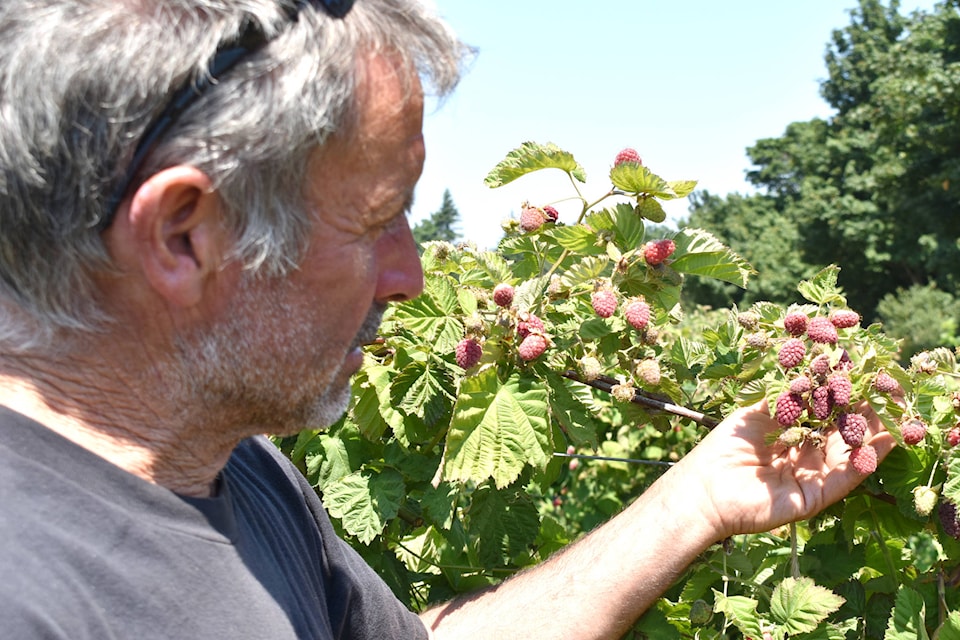The rain we had for the long weekend of July filled up all of my 11 rain barrels but the heat of the last two weeks gave me a chance of using it.
Even with all the grass clippings as mulch, I find large cracks in the ground in some of the beds because it is so dry.
The summer of 2021 pattern is repeating itself.
Some of my berries have dried on the stems and some leaves have been scorched. From what I was reading on the internet, “environmental leaf scorch occurs when tree leaves have literally been burned by the sun, hot temperatures or a general lack of rain. In these conditions, tree roots do their best to keep water flowing, but sometimes not all leaves get enough water. Those dehydrated leaves are the ones with brown, sometimes shriveled, tips that look burned. The symptoms of this are usually at the tips of the branches and on the most exposed leaves.”
Some other plants do very well in the heat and one of them is purslane (Portulaca oleracea). I wrote about it a couple years ago. This year it has taken over one of my raised beds. You can add to green salad for a crunch, make a batch of soup (very tasty) or munch on it straight out of the garden.
Purslane contains the omega-3 fatty acids alpha-linolenic acid (ALA) and gamma-linolenic acid (LNA), with four milligrams of these per gram of fresh leaves. It actually has more omega-3s than any other edible green plant.
The succulent leaves of purslane are edible and have a somewhat salty taste. They’re safe for human consumption and also great for feeding to chickens.
According to the National Institutes of Health, purslane has a rich nutritional profile and is: a rich source of potassium, high in magnesium, high in calcium, rich in high levels of omega-3 fatty acids, a good source of vitamin C, vitamin A, and B vitamins.
One note of warning though, for people prone to kidney stones: purslane leaves are high in oxalic acid. Too much purslane could be problematic ( Purslane - A Tasty 'Weed' That is Loaded With Nutrients ).
I was asked: When do I harvest my garlic bulbs? For the softneck garlic, in one of my books, it says to do it when the tops fall over and die, let them dry in the sun for a few days and cure them in an airy place in the shade, as you would onions. Store them in mesh bags or braid the tops.
For the hardneck garlic, the green leaves start to die from the bottom up. When the three or four leaves from the bottom are dead and the top is still green, it is time to harvest. The hardneck varieties produce scapes that are harvested around the middle of June. After the scapes are cut off, the plant puts its energy in growing the bulb and harvest is around 30 days later.
Hang the garlic bundles in a dry and well-ventilated area away from direct sunlight. A shaded spot is ideal for preserving the flavour compounds in garlic. Make sure the area has low humidity levels to prevent bulb rotting.
Let the garlic hang undisturbed for three to four weeks. During this time, the garlic bulbs will dry out and the outer layers will become crispy. The leaves will naturally wither and dry as well.
For more information: 250-558-4556 or jocelynesewell@gmail.com,




